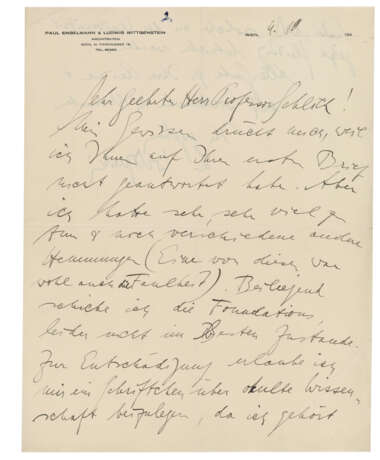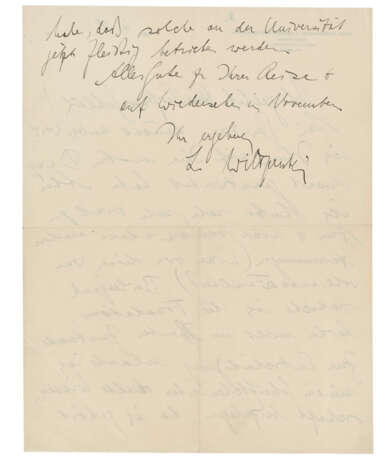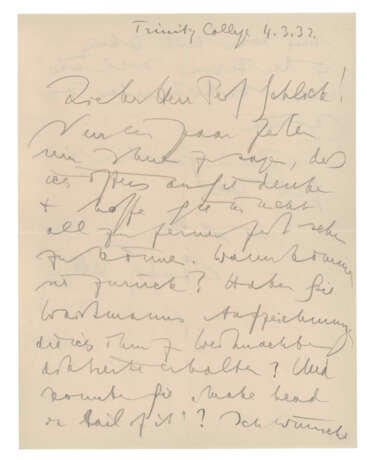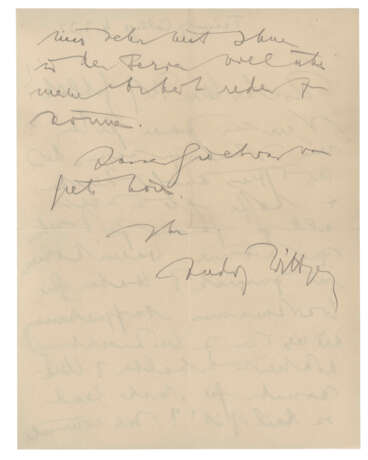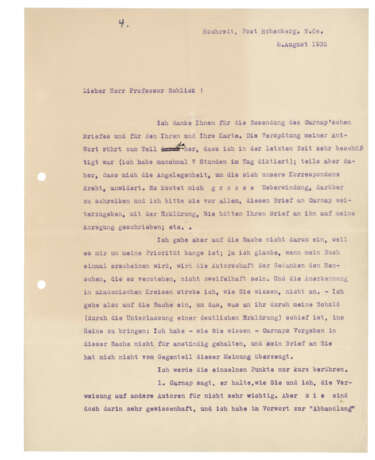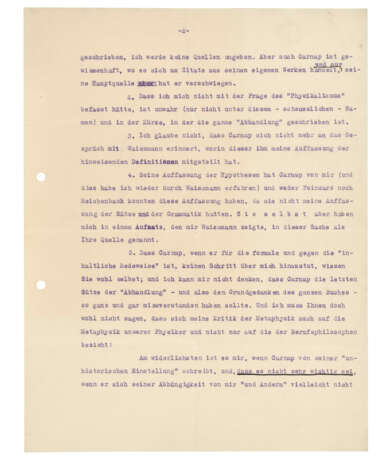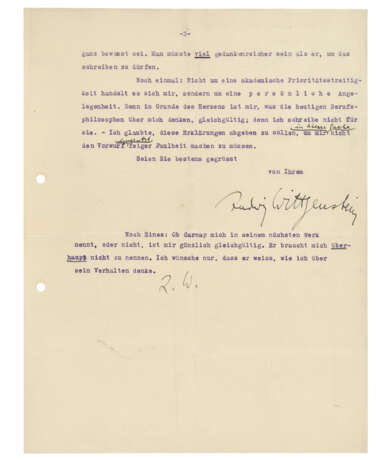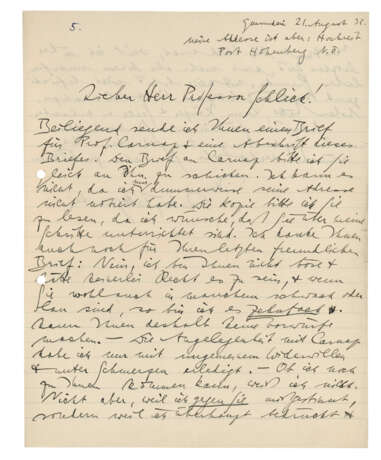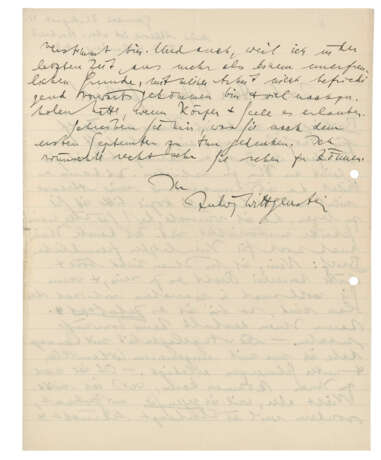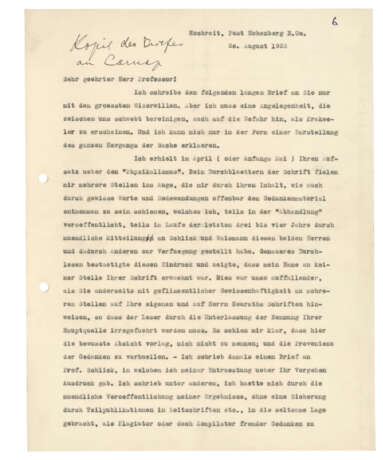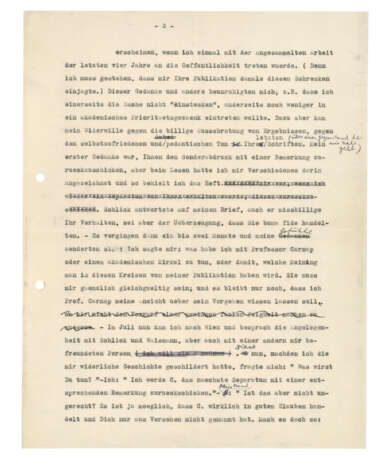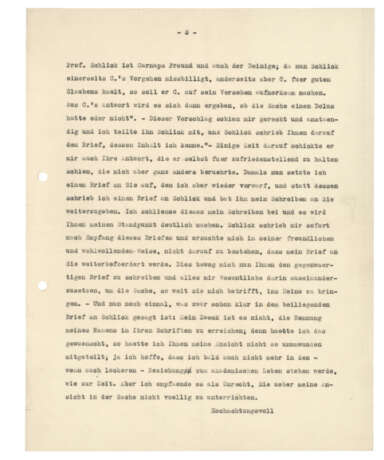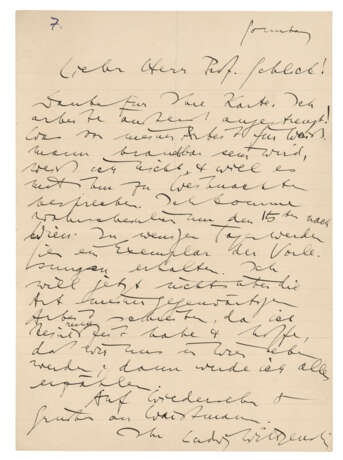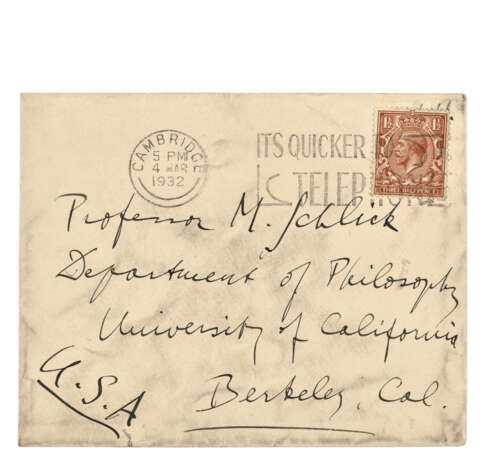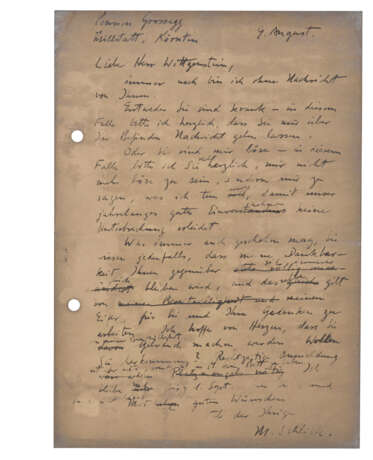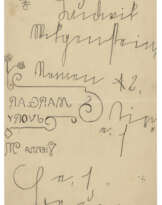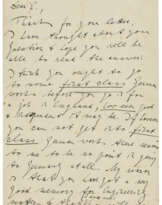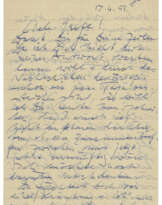ID 1109111
Lot 310 | Ludwig Wittgenstein (1889-1951)
Valeur estimée
£ 20 000 – 30 000
4 autograph letters and one typed letter signed (‘L. Wittgenstein’, ‘Ludwig Wittgenstein’) to [Moritz] Schlick, [Vienna], Cambridge, and Post Hohenberg, [Lower Austria], 4 March - 8 August 1932 and n.d.
In German. 9 pages in total, various sizes, 227 x 177mm to 290 x 228mm, one on paper headed ‘Paul Engelmann & Ludwig Wittgenstein, Architekten’, in pen and pencil. One envelope. [With:] carbon typescript copy of a letter from Wittgenstein to Carnap, 20 August 1932, 3 pages. Provenance: Sotheby's, 18 & 19 May 1989, lot 356.
Wittgenstein’s famous break with the Vienna Circle: an apparently-unpublished series of letters to Moritz Schlick, the head of the group of philosophers, scientists and mathematicians principally inspired by the Tractatus, one accusing his colleague Rudolf Carnap of plagiarism. The first letter – undated, but on paper printed in the 1920s – is friendly: Wittgenstein offers to send a paper on occult science, which he understands is being studied at the university [of Vienna]. On 4 March 1932, he remains cordial, asking Schlick when he will be back, perhaps around Christmas. However, by 6 August 1932, his tone has changed: Wittgenstein professes himself disgusted by the matter at hand, which costs him a great deal of willpower to write about, asking that Schlick convey the present letter to Carnap: ‘I don’t go into this matter because I am worried about my precedence: I believe that once my book is published, the authorship of the ideas will not be in doubt among people who understand it. And, as you know, I do not strive for recognition in academic circles. I go into this matter in order to clarify what is wrong [...] I did not consider Carnap’s actions in this matter to be decent, and his letter to you has not convinced me otherwise’, presenting a numbered list of his grievances: ‘Carnap says that – like you and me – he doesn’t believe references to other authors to be particularly important. But you are very conscientious about it, and I wrote in the preface to the [Tractatus] that I will not cite any sources. But Carnap is also conscientious when it comes to quotations from his own works and only conceals his main source’, continuing by going into some technical detail. He declares he doesn’t care what today’s ‘professional philosophers’ think of him; ‘whether Carnap mentions me in his next work or not is completely irrelevant to me. He doesn't need to name me at all. I just want him to know how I feel about his behaviour’. On 21 August he encloses a letter for Carnap, along with a carbon copy for Schlick [present here; giving his account of the dispute between them], asking him to forward it, for he has stupidly mislaid the address; he thanks Schlick for the friendly letter, stressing that he is not angry with him, with the final letter similarly mild in tone.
Wittgenstein continued to meet with Moritz Schlick, sometimes with Friedrich Waismann, after he had tired somewhat of the rest of the Vienna Circle. The men collaborated on an attempt to write an account of Wittgenstein’s current philosophical stance in the early 1930s – Wittgenstein dictated some of his thoughts to Schlick, including a strident verificationist series of remarks, and shared several manuscripts with him. Their meetings continued until 1932: in May that year, shortly after receiving an offprint written by Rudolf Carnap – a fellow member of the Circle and Schlick’s doctoral student – on 'Physicalistic Language as the Universal Language of Science', which, Wittgenstein claimed, made extensive and unacknowledged use of his own ideas, he wrote to Schlick that he might 'soon be in a situation where my own work shall be considered merely as a reheated version or plagiarism of Carnap’s'.
| Lieu d'origine: | Autriche, Angleterre |
|---|
| Lieu d'origine: | Autriche, Angleterre |
|---|
| Adresse de l'enchère |
CHRISTIE'S 8 King Street, St. James's SW1Y 6QT London Royaume-Uni | |||||
|---|---|---|---|---|---|---|
| Aperçu |
| |||||
| Téléphone | +44 (0)20 7839 9060 | |||||
| Commission | see on Website | |||||
| Conditions d'utilisation | Conditions d'utilisation |
